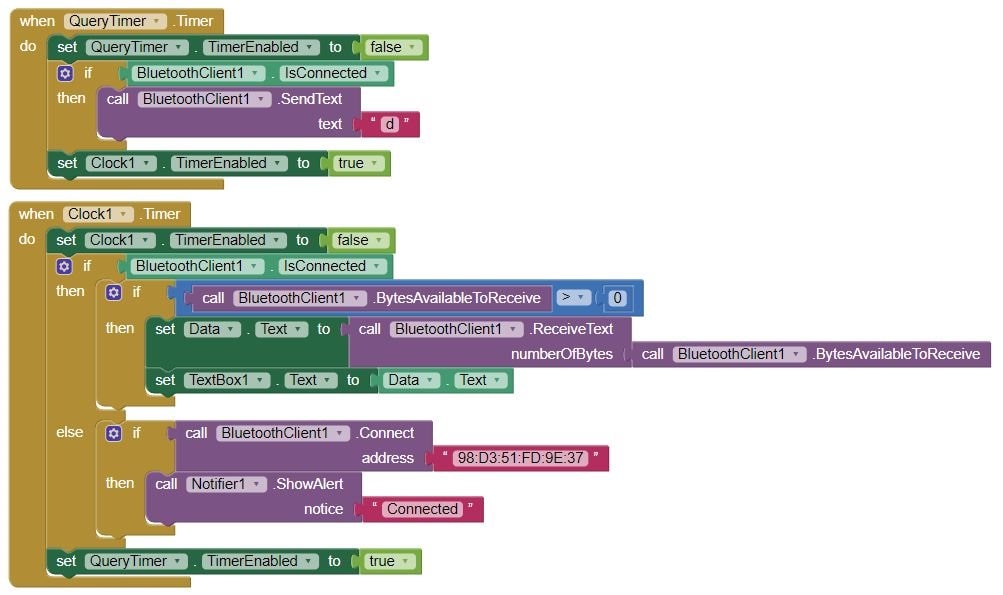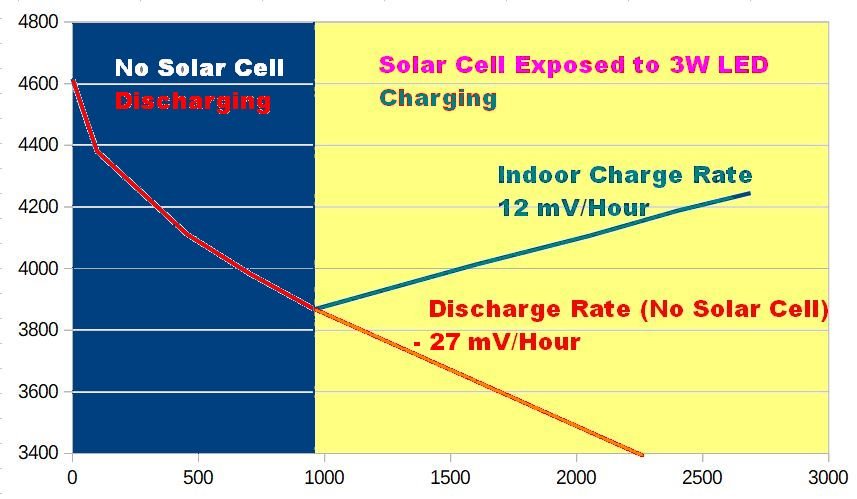I now have all sub-systems working so it is time to show the full system in action. I expanded the MSP430 firmware to deal with power management and Bluetooth communications and I wrote an android app to allow remote display of the weather station data.
System Operation
I will review some of the performance measurements I took but first, here is a short video showing the system in operation - indoors so I don't need to be outside in the cold at midnight:
The android app is written in App Inventor from MIT. It has been years since I used App Inventor, but when I fired it up, there was all my previous work. So I reused some graphics from an old Star Trek project, and then did a complete re-write of the underlying code. After going through a bit of a re-learning curve, I was able to write quite a bit tighter code. The whole thing fits on one page:

Basically it automatically tries to make a Bluetooth connection to the weather station every few seconds until the weather station enables Bluetooth.
The weather station may have Bluetooth turned off most of the time to conserve power, but it gets turned on every minute or ten minutes. I haven't decided on an optimum schedule yet.
When it connects, it requests data and then when it receives a reply it displays temperature and capacitor voltage. This project is not about software, so the software is all very simple.
Capacitor and Solar Cell Performance
The weather station consumes 47 mA when everything is running. About 42 mA of this is the Bluetooth module. About 5 mA is the temperature and analog circuitry and about 0.3 mA is the MCU and LCD.
With the analog section turned on every minute to read temperature and the Bluetooth turned on every 10 minutes, the weather station depletes the capacitor at 27 mV per hour. The capacitor voltage can go from 5.4 V to 3.4 V or even lower, but that means the capacitor can run the station for 74 hours without sunlight.
So now the only question is, can the solar cell charge the capacitor more in one day that the station will consume at night?
When the station is drawing its normal current and the solar cell is exposed to a 3 W LED it will run the system and charge the capacitor at a rate of 12 mV per hour. This is approximately 33% of what it would need to charge up the capacitors the same amount they would lose during one night.
So I still need to test if sunlight provides at least 3 times more light than a 3 W LED. Since sunlight provides up to about 1 KW per square meter I am hopeful there won't be a problem.
That will have to wait for the weekend since I go to work during the daylight hours.
Here is a graph showing the data I collected over the course of 3 days to enable the above discussion:
 minutes
minutes
Conclusions
The system power consumption can be automatically reduced to less than 1 mA, which makes it pretty easy to run from a solar cell. It becomes mainly an optimization exercise to determine how often to turn on the Bluetooth radio.
The mechanical aspects of the system are extremely clean and rugged thanks to the weatherproof Hammond case.
The chassis components have been carefully designed to make assembly easy and clean.
The software timing is not yet fully optimized but it is functional and easy to adjust.
Relevant Links
Just Encase Solar Super Capacitor Experiment - Blog 1
Just Encase Solar Super Capacitor - Project Outline - Blog 2
Just Encase Super Capacitor Solar Weather Station - Design - Blog 3
Just Encase Super Capacitor Solar Weather Station - Assembly - Blog 4
Just Encase Super Capacitor Solar Weather Station - Bluetooth - Blog 5
Just Encase Super Capacitor Solar Weather Station - Indoor Operation - Blog 6
Just Encase Solar Super Capacitor Weather Station - Outdoor Tests - Blog 7
Just Encase Design Challenge
Tube Amp using Hammond transformers
GPS location and distance tracking using LoRa on a MKR WAN 1300

-

genebren
-
Cancel
-
Vote Up
0
Vote Down
-
-
Sign in to reply
-
More
-
Cancel
Comment-

genebren
-
Cancel
-
Vote Up
0
Vote Down
-
-
Sign in to reply
-
More
-
Cancel
Children